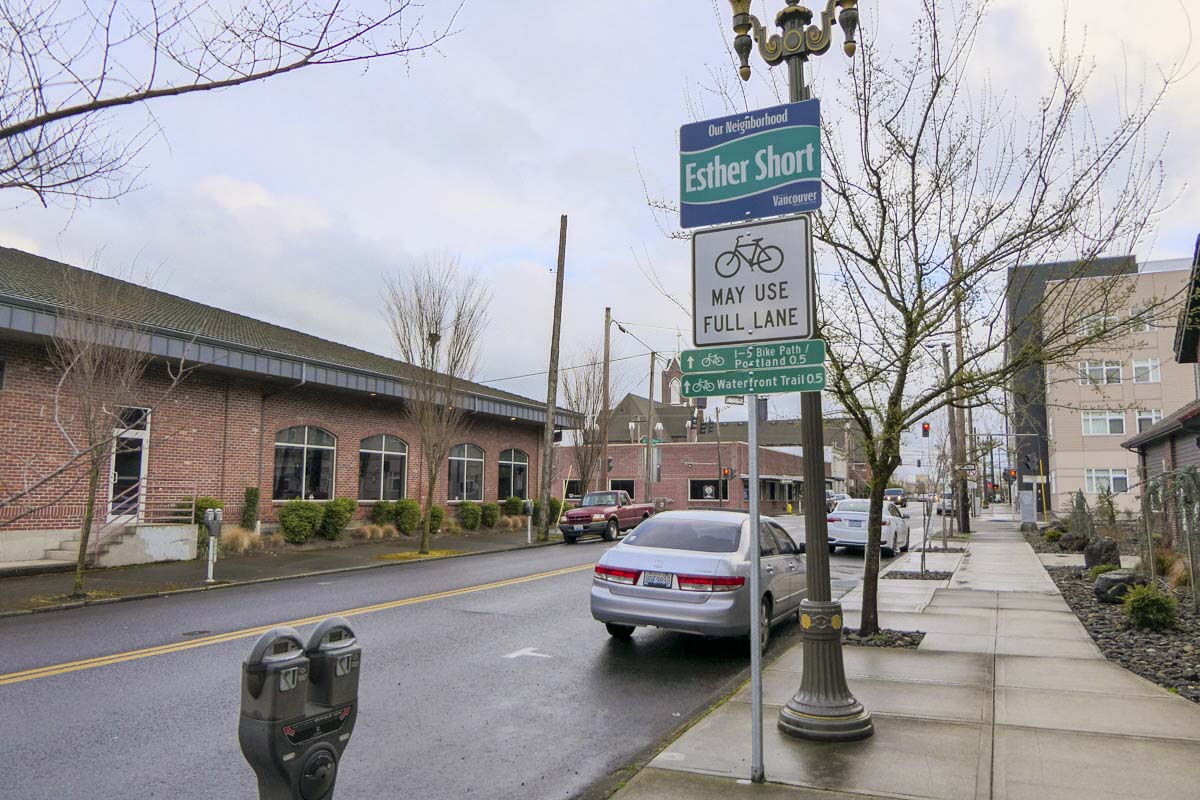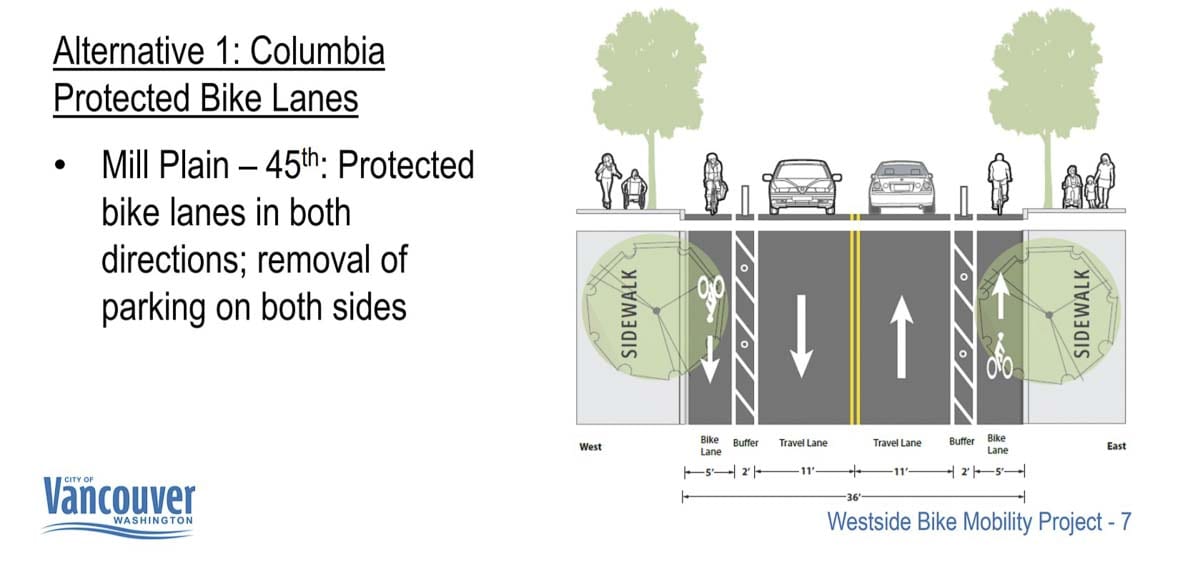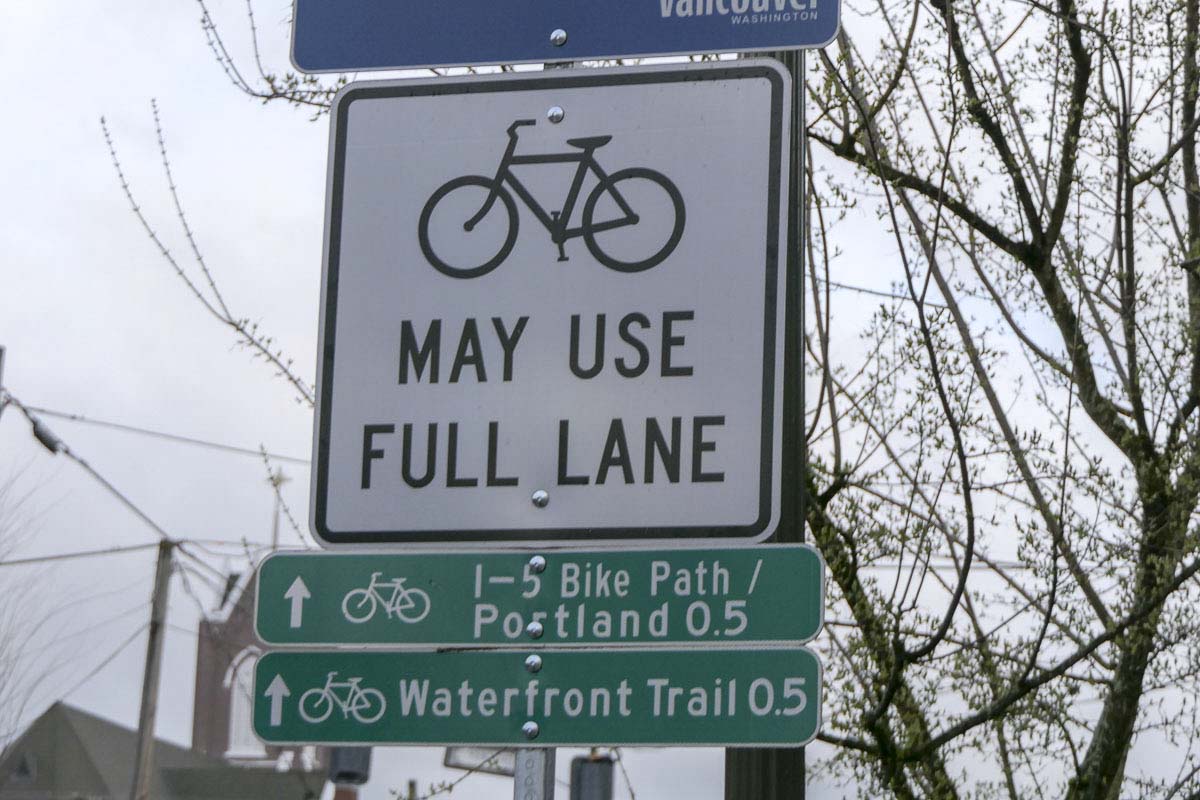The decision comes after a year-long public engagement process that led to no consensus on an alternative plan
VANCOUVER — A year after the city of Vancouver delayed a decision on the Westside Bike Mobility plan, things are pretty much back where they began.

That plan will remove close to 400 parking spaces in downtown Vancouver, mostly along Columbia Street from 13th to 45th.
“Those changes are going to require all of us to come together and make decisions about how we’re going to adapt … and become the city that’s possible for us,” said Councilor Eric Paulsen, noting how contentious the debate over this issue has been. “And with this degree of divisiveness, it will be especially challenging for us to do that.”
The decision to move ahead comes after a year-long pause following public outcry. Several neighborhood groups along Columbia Street said they had not been included in the original planning process, or properly informed about what was being planned.
The city reconvened a new citizen’s stakeholder group of 18 individuals, out of more than 50 who applied to take part. That group spent numerous meetings going over at least half a dozen options. Open houses were held, along with online surveys and meetings with neighborhood associations in the area.
At the Feb. 24 city council meeting, City Manager Eric Holmes called the process “radically transparent, with open sharing of a tremendous amount of information and exploring a wide range of options.”
Despite that process, Holmes admitted the community advisory committee could not reach “a clear path forward for the staff team or for the city council.”
“I’ve learned that no amount of process will resolve fundamental disagreements on divisive issues,” said Paulsen. “And that’s where leadership comes in.”
Paulsen was one of five council members to back Option One, which Holmes called the “gold standard” when it comes to bike and pedestrian safety.
“That alternative, not only is the safest, but also is most closely aligned with the body of policy work that the city council and previous councils over the last decade have established,” said Holmes.

Councilors were also presented with a “hybrid” option, which would remove 223 parking spaces. The lower number would be achieved by using shared bike and vehicle lanes in some areas, known as a sharrow.
But several of the council members, while acknowledging the inconvenience of losing so many parking spots downtown, said that safety needed to be a top priority.
Councilor Laurie Lebowsky noted that she walks Columbia Street almost daily, and was nearly run over by a car while crossing the street.
“The driver most likely was speeding to head south to get back on I-5 at Washington Street,” she said. “We need to calm the car traffic on Columbia. And the buffered bike lanes will help make that happen.”
“The council’s first priority is always safety,” added Councilor Linda Glover. “Our streets are our greatest asset and we must make sure that travel on them is as safe as we can make it.”
The only councilor actively opposing the plan was Bart Hansen, who said the city had gone from low transparency on the process, to a great process in the past year, only to go back to zero by only presenting two options.
“The government would like you to believe that these are the only two options,” Hansen said. “Let me put option A, B and C in front of you and then D and E do not exist, okay? D and E exist.”
Hansen said he would like to simply repave Columbia, then go back out to the community to engage more of the interested groups, in the hopes of determining something that is safe while also being practical.
“If you’re going to deal with a street that’s had parking on it for nearly 100 years,” Hansen added, “you address that with the public first in a full and transparent manner.”

But others said the city has spent nearly 20 years debating how to implement bike and pedestrian safety downtown, while Vancouver ranks worst in Washington state when it comes to pedestrian fatality accidents.
“Staff has presented two options to us tonight,” said Councilor Ty Stober, who joined via teleconference from outside the country. “Both require sacrifice. One incremental and the other complete. But ultimately, sacrifice is required. And the question really is between pulling the band-aid off slowly, or quickly.”
Councilor Sarah Fox, who joined the council in January, said she was uncomfortable taking a strong stance on the issue, but would support Option One of the two options presented, but would prefer to see Columbia Street become a one-way street, with protected bike lanes and parking. Staff looked into it, she says, and pointed out that one-way streets tend to see cars speeding, and there could be confusion from people about whether adjacent streets are also one way.
Mayor Anne McEnerny-Ogle said she took a walk along Columbia Street recently, and noted the Veterans Assistance Center, as well as the many homes and businesses that lack driveways to park in. Those people, she noted, would surely face inconveniences in needing to park farther away from where they live.
“But I’m also reminded that I don’t own the street in front of my house,” she added. “The city owns the street. In fact, the city tells me what to do with the right of way of my sidewalk too, and the curb. So the parking and the traffic and the asphalt all belong to the city. And that right of way means that it should benefit and enable safe access to all users, equitably.”
Under the plan, the only part of Columbia Street that would keep on-street parking would be the block just south of Mill Plain, in the southbound direction. All other street parking spots would be removed between 13th and 45th Avenues, with protected bike lanes both directions between 8th and 13th, and Mill Plain to 45th.
Once fully approved by city council at a future meeting, repaving of Columbia Street could begin as soon as this Summer.




